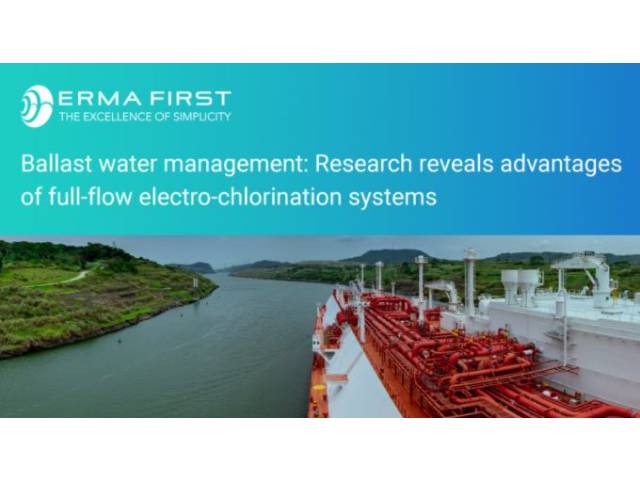Leading ballast water management system manufacturer ERMA FIRST has published detailed research comparing the effectiveness of its full-flow electro-chlorination technology versus ultra-violet technologies as well as side-stream ballast water systems and systems without filters.
The research focuses particularly on the needs of the spot trading cargo fleet, which trades in a range of waters and is potentially subject to both US Coast Guard and IMO standards. According to the shipbroker Clarksons (August 2020 BWTS Report), 46% of the world’s merchant ships have installed electro-chlorination and 25% ultra-violet systems.
“The inherent flexibility of full-flow electro-chlorination makes it a hands-down winner for the spot trading shipowner,” says Konstantinos Stampedakis, Managing Director of ERMA FIRST. “The salinity and clarity of the waters in which a vessel is trading affect the ability of a BWMS to work properly. A spot trading vessel needs to be able to meet all global and local ballast water requirements, including the USA. A full-flow electro-chlorination system, backed up with filtration, can handle large volumes quickly with low power consumption. It doesn’t take up vital cargo space and can be installed in a timely and cost efficient manner. Our system boasts intelligent controls and artificial intelligence to enable real-time remote monitoring.”
The detailed ERMA FIRST whitepaper examines the large power requirements of ultra-violet lamp-based systems and the constraints which they place on ship cargo operations. It also looks at the impact of side-stream ballast water management systems on cargo carrying capacity due to the need to carry salt water, as well as compliance risks on systems with absence of filtration stage.
“The permanent need to carry seawater is problematic as it affects the ship’s trim and further imposes a cargo penalty by reducing the vessel’s cargo capacity by an equivalent amount. This means that there is a continuous loss for the owner of the vessel who is obliged to always carry less cargo to ensure that the BWTS will work,” commented Konstantinos Stampedakis.
ERMA FIRST has been developing BWMS since 2007 and has successfully installed systems on all vessel types and sizes .
To download a copy of the paper, click here.









































